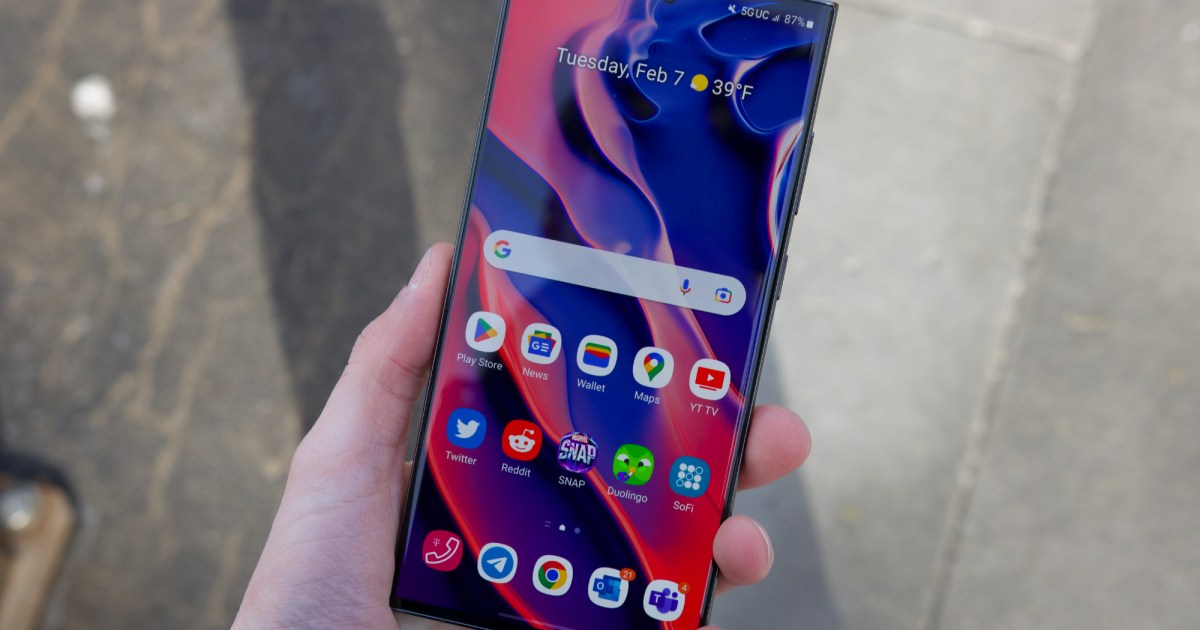It’s hard to find a bad Android phone these days — but what’s the best Android phone in 2023? It’s a daunting question, but one we aim to answer for you in this article.
There’s a lot to consider when buying a new Android phone. Do you want a big screen? How much do you value camera performance? Are you a big-time gamer? Need a long battery life? We’ve compiled a list of Android phones to fit everyone’s needs, regardless of your priorities or preferences.
If you’re also open to non-Android devices, see our list of the best phones overall. Otherwise, keep on reading for our picks of the best Android phones in 2023.
Joe Maring / Digital Trends
Samsung Galaxy S23 Ultra
Best Android phone overall
Pros
- Incredibly powerful processor
- Versatile telephoto zoom camera
- S Pen adds value
- Water-resistant and durable
- Long software update commitment
- Many interesting features to explore
- Large, bright, detailed screen
Cons
- Wired charging is complicated, and only 45W
- Big and heavy
Why you should buy this: It’s an incredible smartphone that will last for years.
Who is it for?: Anyone who wants the very best Android phone money can buy.
Why we picked the Samsung Galaxy S23 Ultra:
Samsung has been improving the Galaxy Ultra formula for the past few years, and it may have peaked with the Samsung Galaxy S23 Ultra. Samsung’s biggest, newest flagship is a masterpiece of design, with a powerful processor, exceptional camera, beautiful display, and many more appealing features. While the price is high, it’s a phone that’s sure to serve you well — and last for years to come.
We’ll start with the camera, as it’s one of the standout features. The S23 Ultra has a quad-lens setup and features a huge 200-megapixel main lens, along with a 10MP 10x periscope telephoto lens, a standard 3x telephoto lens, and a 12MP ultrawide lens. The new camera suite is a game-changer, but not for the reasons you might initially expect. Images taken at 200MP are stunning, but they’re also huge, coming in at a hefty 40MB per shot. Instead, it’s the zoom that makes the S23 Ultra so special. The 3x and 10x zoom options remain great, but the 30x option is catching up in quality. The 100x option is still not the best, but it’s advanced far past what it used to be. Put simply, the S23 Ultra takes zoomed photos that just aren’t possible on other smartphones. Even if zoomed photos aren’t really your thing, it’s still an exceptional setup with a lot of versatility.
As befits a flagship phone, the S23 Ultra is also packing some powerful specs. We’ve already been impressed by the Snapdragon 8 Gen 2 in the OnePlus 11, but the Galaxy S23 Ultra takes it to a whole other level. Despite pushing it with the most demanding tasks we could find, we don’t think we even came close to the S23 Ultra’s upper limit. There was very little heating from demanding games, and lag between tasks was nonexistent. The available storage starts at 256GB, and while that’s a good amount for a modern flagship, consider upgrading if you want to regularly take 8K videos or 200MP images, as both take up a lot of space.
As with the previous S22 Ultra, the S23 Ultra comes with an S Pen, like the Note smartphones of old, and there’s plenty you can do with this — from jotting down notes on the screen to quickly creating gifs from videos. The battery lasts a full day, and while the 45W charging isn’t the fastest around, it’s still good enough for most and recharges the battery quickly. On the subject of downsides, also keep in mind that this phone really fits the “ultra” tag. It’s massive, and really quite heavy as well, so it’s definitely not for those who want a smaller device.
There’s so much we haven’t touched on, like the gorgeous design and sublime display, but suffice it to say they’re excellent. The Samsung Galaxy S23 Ultra is certainly an expensive phone, but it’s one that will definitely last you for years, and a good investment if you want a phone that’s sure to last the distance.

Samsung Galaxy S23 Ultra
Best Android phone overall
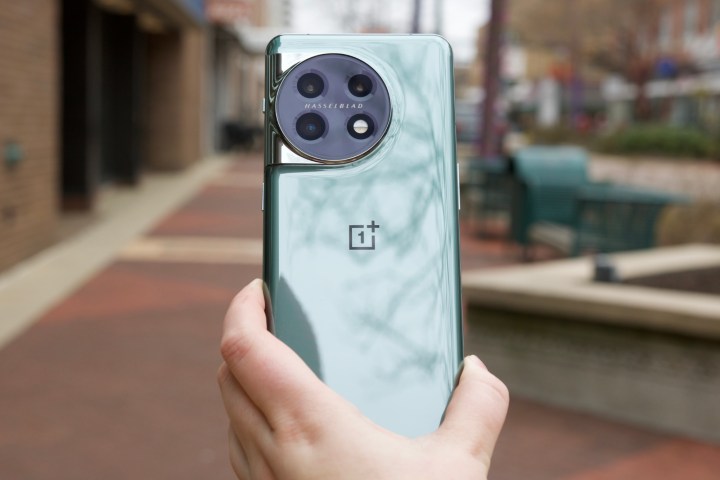
Joe Maring/Digital Trends
OnePlus 11
Best Android phone runner-up
Pros
- Eye-catching design
- Two-day battery life
- 25 minute battery charging
- Characterful camera
- Long software update commitment
Cons
- No wireless charging
- Portrait camera disappoints
Why you should buy this: The OnePlus 11 delivers great specs and features for less money than the S23 Ultra.
Who it’s for: Anyone who wants a quality Android phone that’s not prohibitively expensive.
Why we picked the OnePlus 11:
While the Galaxy S23 Ultra may be the best Android phone overall, the OnePlus 11 is a close runner-up. It all starts with the OnePlus 11’s hardware. A combination of a stainless steel frame and glass back results in a phone that feels wonderful to hold. The rear camera housing takes some getting used to, but it’s bold, distinct, and stands out from the crowd. The best part? After removing it from the OnePlus 10T, the OnePlus 11 brings back the alert slider — and it’s just as great as ever.
The OnePlus 11 pairs its good looks with extremely capable specifications. The 6.7-inch AMOLED display is a joy to look at, and the 120Hz refresh rate adds incredible fluidity to everything you do. That’s also helped by the Snapdragon 8 Gen 2 chipset powering the phone. Why? It’s fast. No matter what app or game you throw at the OnePlus 11, it handles it with ease. But more so than that, it does so with good thermals and excellent power efficiency. Expect to get around two days of use per charge, and when the battery does eventually run out, 80W charging allows you to go from 0% to 100% in about 30 minutes. You don’t get wireless charging on the OnePlus 11, and while that is annoying, the ultra-fast wired charging speeds help make up for it.
What about the cameras? The star of the show is the 50MP main camera. It produces images that are sharp, detailed, and have a distinct style to them — largely thanks to OnePlus’s ongoing Hasselblad partnership. It’s just so much fun to shoot with. The 48MP ultra-wide camera is also good, though the 32MP telephoto camera with its 2x optical zoom just can’t compete with the zoom capabilities of other Android phones.
When using the OnePlus 11, you’re interacting with OxygenOS 13. It’s not as minimalistic as previous versions of OnePlus’s software, but it’s fast, fluid, and generally great to use. Even better, you’re promised four major Android updates and five years of security patches. Add all of that together with a $699 starting price, and the OnePlus 11 easily stands tall as one of the best Android phones in 2023.
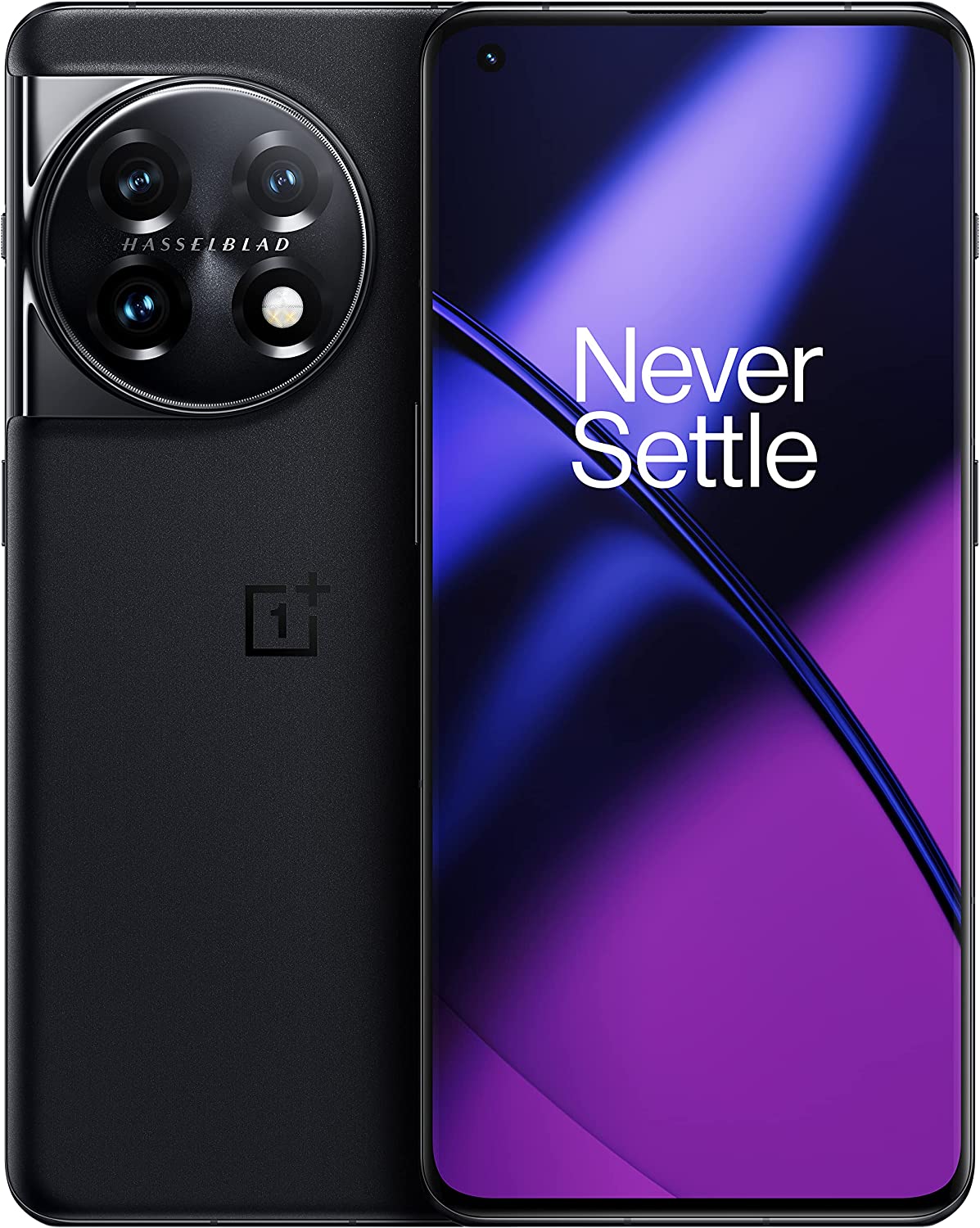
OnePlus 11
Best Android phone runner-up
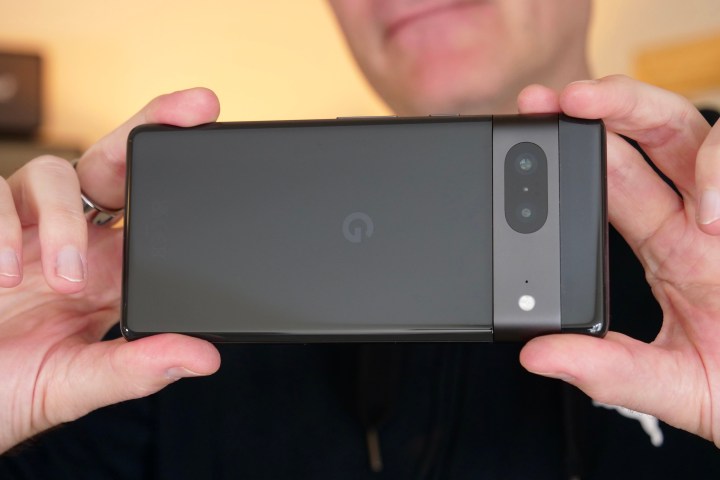
Andy Boxall/Digital Trends
Google Pixel 7
Best value Android phone
Pros
- Superb camera
- Long battery life
- Eye-catching design
- Vibrant screen
- Years of software updates
- Fantastic price
Cons
- Slow charging
- Software bugs
- Poor gaming performance
Why you should buy this: The Pixel 7 features a winning combination of a great camera, long battery life, and a great software experience.
Who it’s for: Anyone who seeks a reasonably priced smartphone with a great camera, excellent software, and respectable battery life.
Why we picked the Google Pixel 7:
This is a substantial smartphone at 8.7mm thick and 197 grams, encased in a smooth aluminum chassis and a Gorilla Glass Victus rear panel. It’s a bit slippery, so it needs a firm grip and a case. The 6.3-inch AMOLED screen has a 90Hz refresh rate and a 2400 x 1080 pixel resolution with HDR10+.
Two cameras sit on the back — a 50MP f/1.9 aperture main camera with optical image stabilization (OIS) and laser autofocus, and a 12MP f/2.2 wide-angle camera. The main camera is one of the best cameras on a smartphone. It supports video at 4K resolution up to 60 frames per second and 10-bit HDR. The front carries a 10.8MP f/2.2 aperture selfie camera. The Pixel 7’s main camera produces sharp, visually punchy photos while Night Sight mode pictures bring out plenty of detail.
The Pixel 7 runs on Google’s new Tensor G2 processor and comes with 8GB of RAM and either 128GB or 256GB of storage. Android 13 comes installed. The handset only has a 4,355mAh battery, but that still provides robust all-day battery life.
There’s no charger in the box, but the phone supports USB Power Delivery 3.0 and promises a 50% charge in 30 minutes.
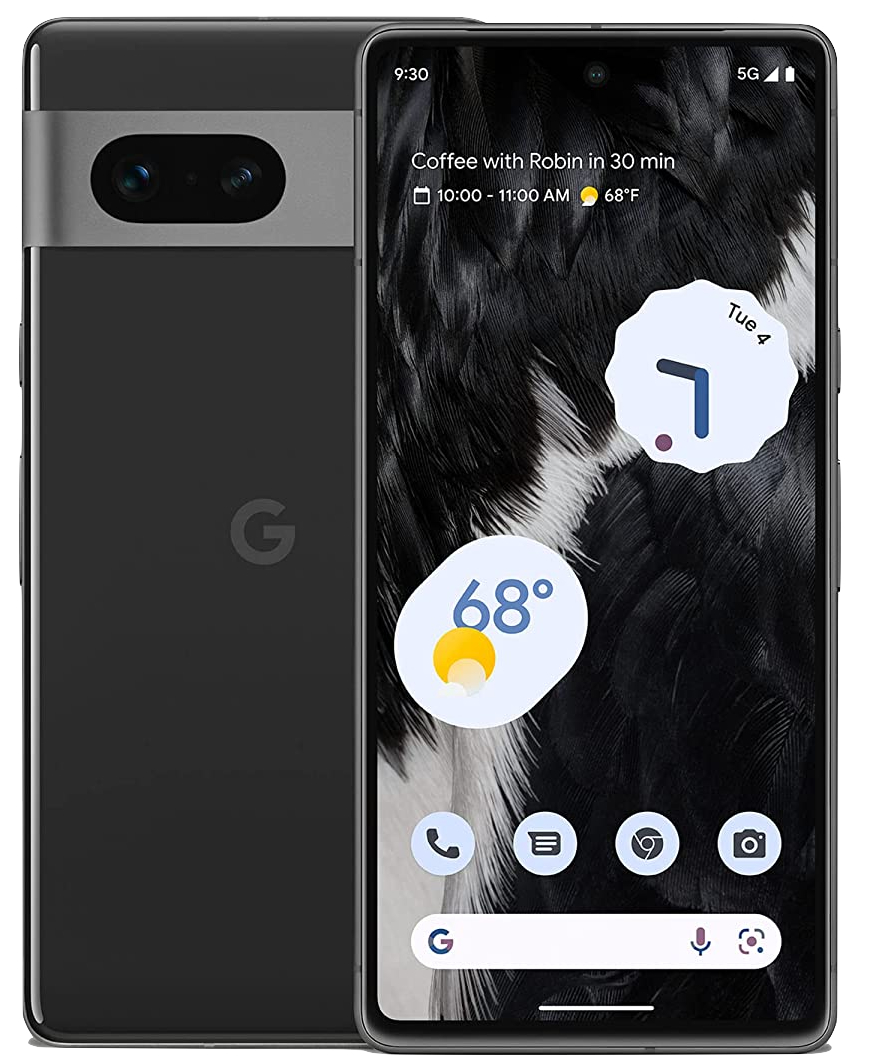
Google Pixel 7
Best value Android phone
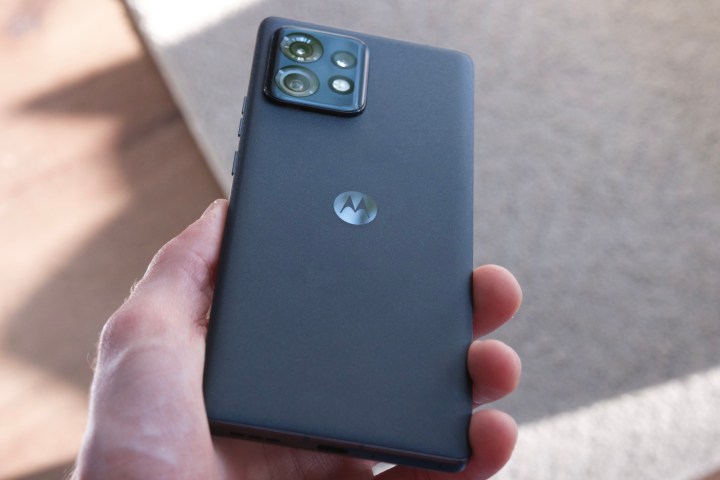
Joe Maring/Digital Trends
Motorola Edge Plus (2023)
Best big Android phone
Pros
- Premium, comfortable design
- Gorgeous OLED screen
- Two-day battery life
- 68-watt wired charging
- Motorola’s Android interface
- Good update policy
- Very competitive price
Cons
- Disappointing speakers
- No always-on display
- Limited telephoto camera
Why you should buy this: This is one of Motorola’s best smartphones in years, as it features everything you’d want in a high-end Android phone, and the battery life easily lasts two days.
Who it’s for: Anyone who wants an Android phone with a large screen but isn’t difficult to use.
Why we picked the Motorola Edge Plus (2023):
While Motorola has not been at the top of the game in recent years, the Motorola Edge Plus (2023) changes all of that. This is simply one of the best Android phones that Motorola has released in years, and it easily bests the competition.
The design of the Motorola Edge Plus (2023) looks good, even if it may be a little boring compared to some other, more colorful options out there. But the velvety exterior feels great, doesn’t attract fingerprints, and it even has a subtle glimmer effect to it (which is beautiful). It’s also very lightweight, despite being fairly large with a 6.7-inch screen.
Yes, the Motorola Edge Plus (2023) has a gorgeous 6.7-inch display with curved edges. While you may think that makes it harder to hold, it’s quite the opposite. When you combine it with the smooth back and lightweight body, the phone is really nice to hold. Plus, the pOLED display is absolutely gorgeous with 2400 x 1080 resolution, HDR10+, Gorilla Glass Victus, and a whopping 165Hz refresh rate. Yes, you read that right — 165Hz. And with the curved edges, it really looks like there are zero bezels on the Motorola Edge Plus (2023). Unfortunately, the only thing missing is an always-on display.
There’s even an option to keep the 165Hz refresh rate on all the time. But if you use the “Auto” mode for smart optimization up to 120Hz, things on the display still look great, as there are no slowdowns or choppy scrolling.
The Motorola Edge Plus (2023) is powered by a Snapdragon 8 Gen 2 chip inside, along with 8GB of LPDDR5X RAM and 512GB storage. That means you get fast and powerful performance, but it’s also quite power efficient. It packs in a 5,100mAh battery, which easily lasts about two days with day-to-day use. And Motorola packs in a 68W charger in the box, so you can go from zero to 100% battery in a little under an hour — which is very impressive. There is also 15W wireless charging and 5W wireless power-sharing.
On the Motorola Edge Plus (2023), you have a 50MP main camera, 50MP ultrawide with 114-degree field-of-view (which is also used for macro photos), and a 12MP telephoto camera with 2x optical zoom. For selfies, it is equipped with a 60MP camera. Overall, the camera system is good, and you’ll get pretty good photos without too much effort. However, despite 60MP on the selfie camera, the details are soft and not terribly impressive. But it works in a pinch.
You get Android 13 with the Motorola Edge Plus (2023), and it’s very close to the Pixel interface. It’s smooth, easy, intuitive to navigate, and not overloaded with unnecessary cruft. The Moto app gives you quick shortcuts to customization tools, which are rather robust though easy to use.
While Motorola doesn’t always get its phones right, the Motorola Edge Plus (2023) is an exception. If you want a powerful and intuitive Android phone, don’t mind a large curved display, and enjoy having excellent battery life, then the Motorola Edge Plus (2023) is the way to go.

Motorola Edge Plus (2023)
Best big Android phone

Christine Romero-Chan / Digital Trends
Samsung Galaxy S23
Best small Android phone
Pros
- Sleek and compact design
- Comfortable for one-handed use
- Very fast performance
- Reliable cameras take great photos
- Long-lasting battery life
- Five years of guaranteed updates
Cons
- Base storage is still 128GB
- Fast charging up to only 25W
- Limited zoom quality past 10x
Why you should buy this: It’s almost everything we love about the S23 Ultra, in a smaller package.
Who is it for?: Anyone who wants a small, but exceedingly powerful smartphone.
Why we picked the Samsung Galaxy S23:
The Galaxy S23 Ultra is the best Android phone, but it’s going to be a little large for a number of people. Instead, those people should look at the Samsung Galaxy S23, which offers a lot of what makes the Ultra model great, but in a smaller package.
The 6.1-inch display is as gorgeous as Samsung’s usually are, and it’s as bright as it is vivid. The slim bezels mean it’s compact, despite the screen’s size, and the edges are flat, rather than curved like on the S23 Ultra. The smaller size means it’s much easier to use in a single hand, unlike many modern smartphones, and it’s lightweight too. The S23 is a bit on the slippery side, though, so a Galaxy S23 case would be a good idea — just for grip’s sake.
The Galaxy S23 comes with the same Snapdragon 8 Gen 2 for Galaxy processor as its bigger siblings, so it’s just as powerful and stupendously fast as the rest of the range. Unfortunately, there’s a slight downgrade where storage options are concerned. The Galaxy S23 starts with 128GB of storage, compared to 256GB on the Ultra. 128GB is still a good amount of storage, but it’s not really going to cut it if you take advantage of the S23’s ability to shoot 8K video.
You’ll want to take photos and videos with this phone, too. It has a triple-lens camera setup, comprised of a 50MP main lens, a 12MP ultrawide lens, and a 10MP telephoto lens with 3x optical zoom. While not as stunning as the Ultra’s setup, it’s still a great camera phone, producing lovely stills in a wide variety of circumstances. The zoom suffers due to the lower-spec telephoto lens, and it clearly can’t match the S23 Ultra’s improvements, but it’s otherwise a great snapper — if you’re okay with Samsung’s usual oversaturation of colors in post-processing.
Battery life is excellent; we averaged about two days on a single charge, though that was without text messages or phone call use, so if you’re particularly heavy on those, you may last closer to a single day. Recharging is less impressive, with the phone topping out at 25W. That’ll give you a 50% charge in about 30 minutes, which is good, but there are much faster charging phones available, including the OnePlus 11 above.
Prices start from just $799, and the 256GB upgrade is available for just $60 extra, which is a worthwhile investment in our opinion. The Samsung Galaxy S23 is easily the best Android smartphone to buy right now if you’re looking for a smaller phone, and a great phone in its own right as well.

Samsung Galaxy S23
Best small Android phone
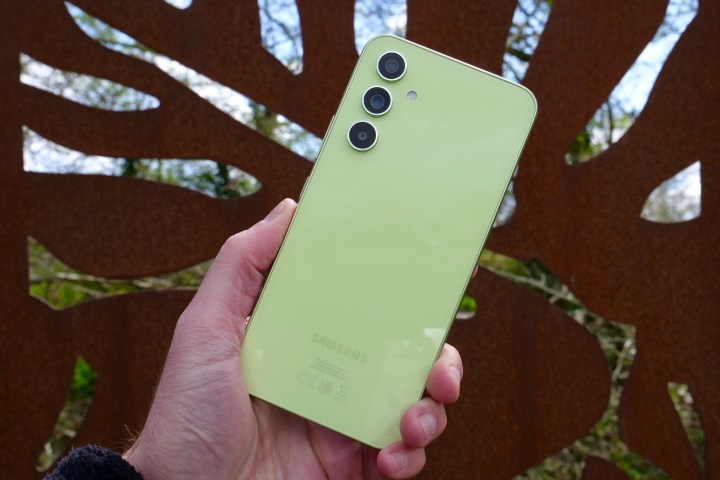
Andy Boxall/Digital Trends
Samsung Galaxy A54
Best mid-range Android phone
Pros
- Eye-catching colors
- It looks like the Galaxy S23
- Colorful screen
- Speakers sound good
- Long software commitment
Cons
- Battery doesn’t last two days
- No wireless charging
- Camera lacks realism
Why you should buy this: It’s a colorful mid-range phone that doesn’t disappoint.
Who it’s for: Someone who wants a good mid-tier (or very colorful) smartphone.
Why we picked the Samsung Galaxy A54:
No, we haven’t accidentally listed one of the Galaxy S23’s colorways, that’s actually the Galaxy A54. Samsung’s new midrange phone is a dead ringer for its flagship, and that’s a very good thing. In fact, the A54’s design differs from its more expensive cousin in just a few ways, and the most important is the range of bold colors. The Violet and Lime variants have a lot of character, and they’re well worth picking over the more standard black or white versions. The chassis is made from plastic instead of the S23’s aluminum, but it’s covered in Gorilla Glass 5, so it still feels like a premium product.
The Galaxy A54 has a 6.4-inch Super AMOLED display with a 120Hz refresh rate, HDR10+ certification, and a 1080p resolution, which largely puts it on a level with the A53 5G’s excellent display. The A54’s display is brighter than its predecessor though, giving it an edge under strong lights and outdoors.
It’s powered by the Exynos 1380, a Samsung-made chip that does a good job of keeping everything running. It might start to show its age as this phone ages, though, especially if you’re a mobile gamer. While never slow, sometimes we did experience some slight lag in opening apps, especially the camera. The internal storage options of 128GB and 256GB are good, especially when there’s room for a microSD card as well.
The camera is a solid affair, especially since it’s ditched the A53’s useless depth sensor. There’s a 50MP main lens, combined with a 12MP wide-angle and 5MP macro lens, and it takes good pictures — with one, pretty jarring exception. The stills it produces are almost always enormously oversaturated, to the point where it can seem comically so. Samsung’s phones have long been known for turning up the saturation a little too much, but it’s the first time it’s done so way too far, and it’s a bit of a disappointment here.
Two-day battery life was starting to become the norm for Samsung’s phones, but that’s not the case here. You’ll get only a single day out of this battery, and while that’s acceptable, it’s a little disappointing if you’re used to much longer battery life.
The Samsung Galaxy A54 has some downsides, but ultimately, they’re on the more minor side when compared with what you get: A capable smartphone that looks great, has a day-long battery life, and scores well in pretty much every area. Even if it doesn’t excel, it doesn’t need to, and the $450 price means it’s a great choice for anyone looking for a mid-range phone.

Samsung Galaxy A54
Best mid-range Android phone
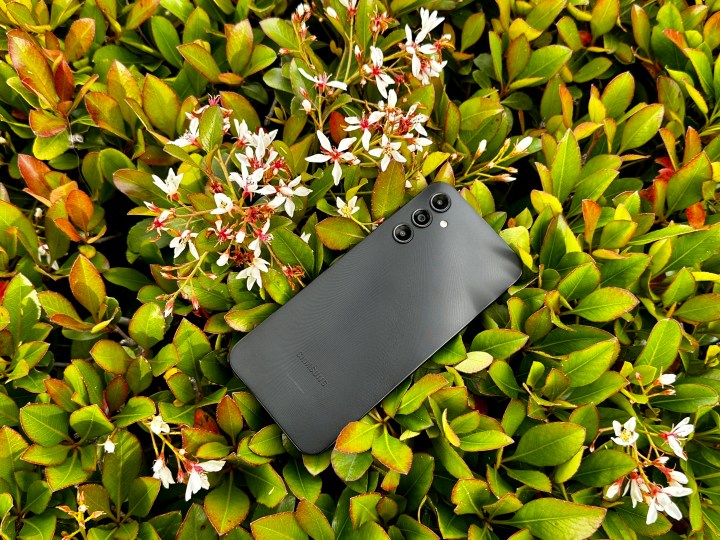
Christine Romero-Chan / Digital Trends
Samsung Galaxy A14 5G
Best cheap Android phone
Pros
- Only $200
- Large display with a 90Hz refresh rate
- 5,000mAh battery
- 50MP rear camera, 13MP selfie camera
- Respectable performance
- Unique, textured back
Cons
- Secondary cameras aren’t impressive
- No water or dust resistance
- Fast charging up to 15W only
Why you should buy this: Because it’s an incredibly good smartphone for the $200 price.
Who it’s for: Anyone who wants a good phone for less than a quarter of the top flagships.
Why we picked the Samsung Galaxy A14 5G:
There are $200 phones that really feel like $200 phones, but the Samsung Galaxy A14 5G isn’t one of them. Samsung has done an incredible of keeping the A14 from feeling too cheap, and that starts with the design. Admittedly, it has a plastic body, but it has a unique texture that feels nice and offers grip, something often missing from slippery glass phones. There’s no water resistance, but there is a headphone jack, which is a nice bonus.
The 6.6-inch LCD display has a 1080p resolution, but it’s hampered by not getting bright enough. It also has some relatively chunky bezels. But even with that in mind, it’s an impressive display for a $200 phone, thanks largely to the 90Hz refresh rate. While not as smooth as the same refresh rate you’ll find in more powerful phones, this is still impressive in a phone this cheap, and a really strong point in its favor when you consider the iPhone 14 is still using a 60Hz refresh rate.
We did come across small stutters during use, and that’s likely down to the relatively modest specs. Still, the Galaxy A14 5G has excellent performance when compared to other devices at this price point, and the 64GB of storage is also good enough at this price too. You’ll want to clear out running apps to keep it running smoothly, but it also comes with 5G, meaning it should be futureproofed enough for the next few years at least. The battery is a solid two-day affair, thanks to the modest specs and 5,000mAh capacity. Recharging isn’t particularly fast at just 15W, but when it lasts this long, it doesn’t matter too much.
The camera is also surprisingly good. Ignore the two additional lenses, though, as they’re 2MP and don’t do much — instead, focus on the 50MP main lens, which takes some decent shots. Images are clear, bright, and avoid oversaturation. Nighttime shots are also good, though with some visible noise when zoomed in. They’re all generally still good enough for social media, though, which is a big test for camera phones at this price.
The Samsung Galaxy A14 5G is a stellar phone for just $200, and if you’re looking for a serious budget bargain, then you’ve found it.

Samsung Galaxy A14 5G
Best cheap Android phone

Joe Maring/Digital Trends
OnePlus Nord N30 5G
Best cheap Android phone runner-up
Pros
- Nice in-hand feel
- Headphone jack and expandable storage
- 120Hz display looks great
- Good, reliable performance
- 50W charger in the box
Cons
- Bland, smudge-prone design
- Very poor camera quality
- Only promised a single OS update
Why you should buy this: It’s a solid, if flawed, cheap smartphone.
Who it’s for: Someone who wants a good cheap phone, and doesn’t care about camera performance.
Why we picked the OnePlus Nord N30 5G:
Cheap phones sometimes struggle to excel in some areas without cutbacks in others, and the OnePlus Nord N30 5G is a prime example of this. OnePlus’s latest $300 phone is great in a number of areas, but has some serious setbacks in others that may or may not impact whether you want to buy and use it.
We’ll start by addressing the elephant in the room, and it’s the camera. The Nord N30 has a triple lens rear camera setup, and while impressive on paper, the combination of a 108MP main lens, 2MP macro lens, and 2MP depth sensor don’t deliver the goods. The 108MP lens lacks optical image stabilization so a lot of stills come out blurred. Low-light shots are blurred and noisy, while even images in good lighting tend to be bland and characterless. The 2MP macro lens is acceptable, but it can’t rescue what is a poor overall showing.
Thankfully, other areas of the phone are a lot better. The design is a little boring, but it feels and handles very well. It’s well weighted, meaning one-handed use is possible despite the large size, and it has a headphone jack and microSD card as well. The 6.72-inch LCD display is excellent, and has bright colors and a 1080p resolution. Most impressive though, is the refresh rate. The Nord N30 sports a 120Hz refresh rate, putting it on the level of flagship phones like the Samsung Galaxy S23 Ultra and Google Pixel 7 Pro.
It’s no gaming phone, but performance is still good. The Snapdragon 695 can handle most modern games, even if you may need to drop graphical quality if you want to experience the higher refresh rates the display is capable of. Battery life is similarly strong, and you can expect over a day of use most of the time. The Nord N30 also supports up to 50W of super-fast charging too, making it one of the fastest charging phones at this price point.
Yes, the camera is a letdown — but that’s only important if you’re the sort of person who likes taking pictures and videos. If you’re not much of a photographer, then there’s a lot to appeal to you here. The OnePlus Nord N30 5G has an excellent display, good performance, and a great battery life, and is a solid phone for just $300.

OnePlus Nord N30 5G
Best cheap Android phone runner-up
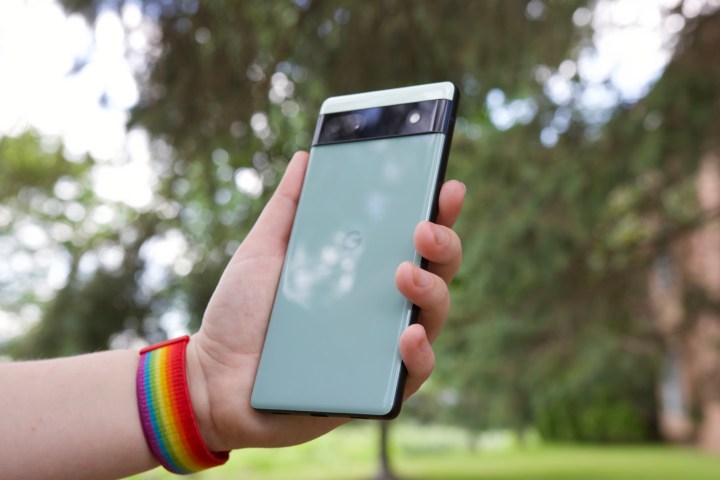
Joe Maring/Digital Trends
Google Pixel 6a
Best cheap camera Android phone
Pros
- Compact, lightweight design
- IP67 water resistance
- Flagship-grade performance
- Excellent cameras
- Clean software
- Years of guaranteed updates
Cons
- Display is only 60Hz
- Tensor chip runs hot
- Lacking battery life
Why you should buy this: The Pixel 6a delivers a lot of phone for not much money and is an excellent value.
Who it’s for: Anyone in the market for a new handset that needs to keep the price tag under $350.
Why we picked the Google Pixel 6a:
The Pixel 6a’s relatively petite form factor is derived from its 6.1-inch OLED panel — smaller than the 6.4 and 6.7-inch screens on siblings Pixel 6 and 6 Pro. The screen features an HD+ 1080 x 2400 pixel resolution, 60Hz refresh rate, and is covered with Corning Gorilla Glass 3. The back sports a two-tone design separated by Google’s distinctive top camera bar. The aluminum frame is durable while the plastic back is grippy and repels fingerprints.
The Google Tensor chip is exactly the same as in the flagship Pixel models and as a performer, it holds up to day-to-day tasks well with reliable multitasking, though the phone tends to run hot. The Pixel 6a now runs Android 13, and Google promises three years of OS upgrades and five years of security updates.
The Pixel 6a has a reliable camera phone setup. It packs an older 12.2MP camera featuring an f/1.7 aperture, optical image stabilization (OIS), and phase detection autofocus. It’s paired with a 12MP ultrawide camera with a 114-degree field of view, and an 8MP selfie camera. The phone captures great detail and punchy colors that aren’t overly vibrant and uses its HDR features judiciously.
The Pixel 6a runs on a 4,410mAh battery — not exactly a powerhouse — but more like a one-day smartphone for most users. The 18W wired charging is the only option, as the phone does not support wireless charging.
While Google recently released the slightly better Pixel 7a, we’re still recommending the Pixel 6a over it. Why? Although the Pixel 7a has more megapixels in the main camera and has the Tensor G2 chip, wireless charging, and is slightly more durable, the price increase to $499 makes it less of a budget phone — especially when the Pixel 6a is now just $349 (or even cheaper thanks to frequent sales).
We even did a camera comparison between the Pixel 6a and Pixel 7a, and overall, the difference in photos is negligible — to the point where we would recommend the Pixel 6a over the 7a, since the reason photos look great on Pixel phones is through the software, not necessarily the hardware itself.
The battery life on the Pixel 7a is also pretty much the same as the Pixel 6a, and though it has wireless charging, it’s not super fast, and there is no reverse wireless charging — for that, you’ll want to go up to the Pixel 7 or Pixel 7 Pro.

Google Pixel 6a
Best cheap camera Android phone

Andy Boxall/Digital Trends
Nothing Phone 2
Best designed Android phone
Pros
- Great, modern design
- Glyph lights are cool and useful
- Clean, yet customizable software
- Excellent daytime camera
- Colorful screen
Cons
- Only IP54 water resistance
- Poor lowlight camera performance
Why you should buy this: Because it’s like nothing else on the market, and a good phone to boot.
Who it’s for: Someone who wants a phone that really stands out from the usual crowd.
Why we picked the Nothing Phone 2:
Aside from folding phones, all smartphones are starting to look the same in terms of design. However, Carl Pei’s Nothing has done something different with the Nothing Phone, and the latest Nothing Phone 2 continues to stand out from the crowd with the clear glass back and Glyph lighting system.
The Nothing Phone 2 is slightly bigger than its predecessor, coming in with a 6.7-inch OLED display, while the first phone had a 6.5-inch display. The 6.7-inch screen has 2412 x 1080 pixel resolution and a dynamic refresh rate up to 120Hz. Colors are bright and vivid on the display, everything looks crisp and sharp, and the speaker system is pretty decent for the price.
Even as a second generation device, the design for the Nothing Phone 2 is still unlike anything you’ve seen before. It’s a glass slab, yes, but it feels very light and manageable, despite the large size. The flat edges are part of the aluminum chassis, the clear back is made of glass, and the front screen is covered with Gorilla Glass. The Glyph lighting on the back is still present, though the LED strips are broke up into more segments this time around. However, the glass back also makes the phone very slippery, so be careful.
The Glyph lighting is also improved over the first generation. As mentioned earlier, it’s broken up into sections, giving it more functionality for various purposes. You can use the lighting as a visual timer, highlight priority notifications by having a persistent light, a fill-light for the camera in low light environments, and certain patterns can be set for incoming calls, accompanied by a sound effect. There’s a lot of customization here with the lighting system, and it is one of the standout features of the Nothing Phone 2.
Camera-wise, there aren’t a lot of change from the Nothing Phone 1. You have a 50MP main camera and a 50MP ultra wide. The selfie camera is 32MP. During the daytime, the Nothing Phone 2 will take some great photos. It struggles a bit in lowlight environments, but it’s a very solid performer across the board.
The Nothing Phone 2 comes with Qualcomm’s Snapdragon 8+ Gen 1 chip, which is a slightly older processor. However, it offers fantastic performance and efficiency, so the Nothing Phone 2 should handle anything you need it to with ease. You get Android 13 with Nothing OS 2.0 layered on top. It’s similar to Android on a Pixel, though with some added customization features — including the ability to personalize folders and give all of your app icons a monochromatic paint job.
Battery life on the Nothing Phone 2 is also very good, as it has a 4,700mAh battery inside. Even with heavy use, you should be able to get through the day just fine without having to charge up mid-day. And when you do need to charge, it supports up to 45W PPS charging, which is a little under an hour for a full charge.
Considering the price, the Nothing Phone 2 is one of the best phones you can buy starting at $599. Not only is it one of the most unique looking smartphones around, but the day-to-day experience of using the phone is also rock solid. There’s very little to seriously complain about.
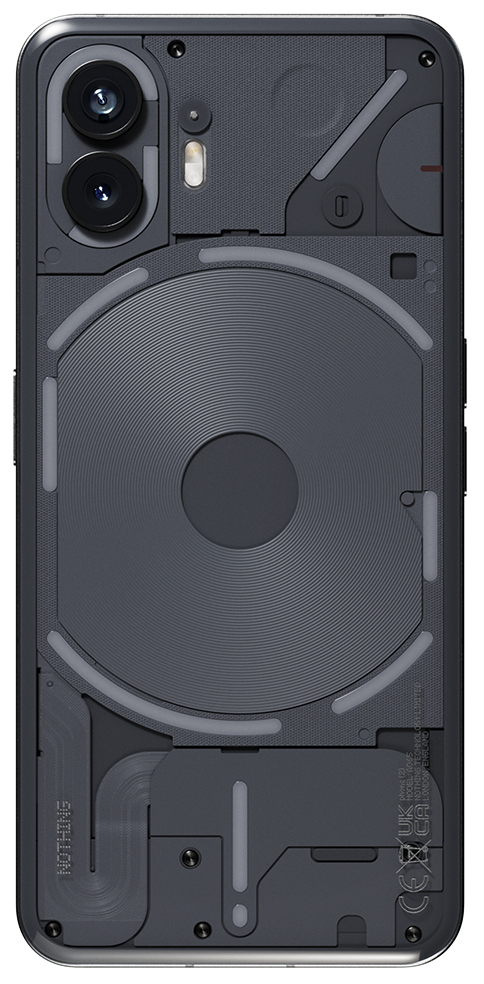
Nothing Phone 2
Best designed Android phone
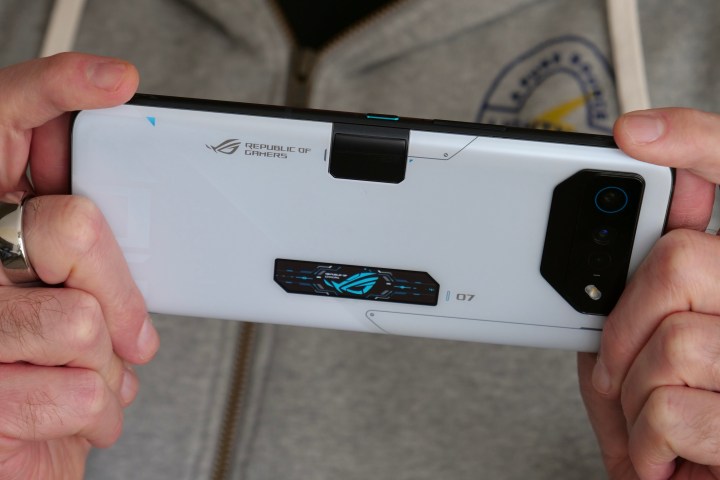
Andy Boxall/Digital Trends
Asus ROG Phone 7 Ultimate
Best gaming Android phone
Pros
- ROG Vision screen is fun
- Amazing audio ability
- Vibrant screen under flat glass
- Gaming features are varied and useful
- Huge amounts of power
- Long battery life
Cons
- Big and bulky
- Lots of hidden features to uncover
- No wireless charging
Why you should buy this: This is the best gaming smartphone available today.
Who it’s for: Mobile gamers who take their gaming very seriously.
Why we picked the Asus ROG Phone 7 Ultimate:
What makes a great gaming phone? If you replied with “power”, then you’re absolutely right — but that isn’t the beginning and end of it, and delivering in a number of other areas is exactly what makes the Asus ROG Phone 7 Ultimate not just an incredible gaming phone, but also a great smartphone in its own right. This is the best gaming phone around, but also worth considering even if you aren’t a serious mobile gamer.
We’ll start with the obvious best place to start: the hardware. As you might expect, power is front-and-center, with the Snapdragon 8 Gen 2 processor continuing to be an exceptional chip for gaming. There’s enough power here to blast through even the most demanding mobile games — and more than enough headroom for it to continue to provide strong performance for years to come. It’s joined by 16GB of RAM and 512GB of storage, so there’s plenty of room for games, videos, and everything else.
You’ll want those videos and games, too, as the ROG Phone 7 Ultimate looks and sounds amazing. The 6.78-inch display is a bespoke Samsung AMOLED screen with a 2448 x 1080 pixel resolution, 1,500 nits of brightness, and a variable refresh rate that tops out at 165Hz. Backing up the gaming power, it also has a 23-millisecond latency and 720Hz touch sampling. In short, it’s bright, crisp, and looks and feels incredibly smooth. The dual front-facing speakers sound amazing, with more bass and fullness than most other phones, with none of the tinny sound that’s common in other smartphones. Even better, the AeroActive Cooler 7 accessory that comes with the phone also includes a subwoofer, giving it a 2.1 sound system. It’s an incredible piece of handheld tech for games and movies alike, and it makes the ROG Phone 7 Ultimate the phone for film lovers as well as hardcore gamers.
It’s a big phone, though, and that may make it more difficult to justify for many people. While the size, weight, and solid build mean it feels great while gaming, it sinks heavily into pockets and can be ungainly. However, the positioning of a USB-C port on the side means you can charge easily while playing, though you may not need to charge as much as you think, as the battery is excellent. The massive 6,000mAh battery dropped to just 70% after a day of light use, but even with six hours of screen use with GPS, gaming, and videos, it ended the day at 1 a.m. with 36% remaining. The camera isn’t a stunner, but it’s capable and certainly not a disappointment.
The Asus ROG Phone 7 Ultimate is very clearly a smartphone for those serious about mobile gaming, but it’s also a strong choice for anyone who wants a unique-looking phone that excels at films and other multimedia as much as gaming. Unfortunately, it’s not available in the U.S. yet, though you can import it. Prices are inflated past the RRP of about $1,533 right now, so it’s worth waiting until prices fall to around that price. If you can get it for the right price, it’s the ultimate gaming phone.

Asus ROG Phone 7 Ultimate
Best gaming Android phone

Christine Romero-Chan / Digital Trends
OnePlus Nord N300 5G
Best Android phone under $250
Pros
- Sleek and lightweight design
- 90Hz refresh rate on a large 6.56-inch display
- Nice tactile haptics
- Great selfie camera
- Expandable storage via microSD
- 5,000mAh battery with 33W fast charging
Cons
- Lower-res screen resolution
- 2MP depth camera doesn’t add much
- Won’t get updates after Android 13
- Only available on T-Mobile
Why you should buy this: It has problems, but it’s still a great smartphone for less than $250.
Who it’s for: Someone who doesn’t mind living with a few compromises, as long as they get a bargain Android phone.
Why we picked the OnePlus Nord N300 5G:
The budget smartphone market can be something of a minefield, and it’s rare for a cheap smartphone to showcase good performance in a range of categories. The OnePlus Nord N300 5G is one of those rare smartphones, and it’s the best Android phone you can buy for under $250.
The design is pretty much what you expect from a $250 phone. That is to say, it’s made from plastic. It’s good-looking plastic, has a slight shimmer like aluminum, and feels good in the hand too. The display is disappointing. It’s only 720p, which means details can look a little soft on the 6.56-inch display. It has a 90Hz refresh rate, though, which is a very welcome (and surprising) addition.
Performance is good, even if it’s not going to run 3D games without a little bit of lag from time to time. The main 48MP lens on the camera is good, even if it doesn’t match real-life colors, but the 2MP depth lens is really quite pointless. But it’s more than good enough for this price level. The same can be said for the battery, which lasted two days on a single charge, and has 33W fast charging.
It’s not perfect, of course. As mentioned, the second camera lens might as well not exist, and the display is on the more disappointing side. However, even with these downsides in mind, the OnePlus Nord N300 5G is an excellent phone for the money. It’ll cost you $228, but it’s only available through T-Mobile and Metro.
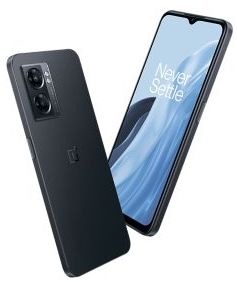
OnePlus Nord N300 5G
Best Android phone under $250
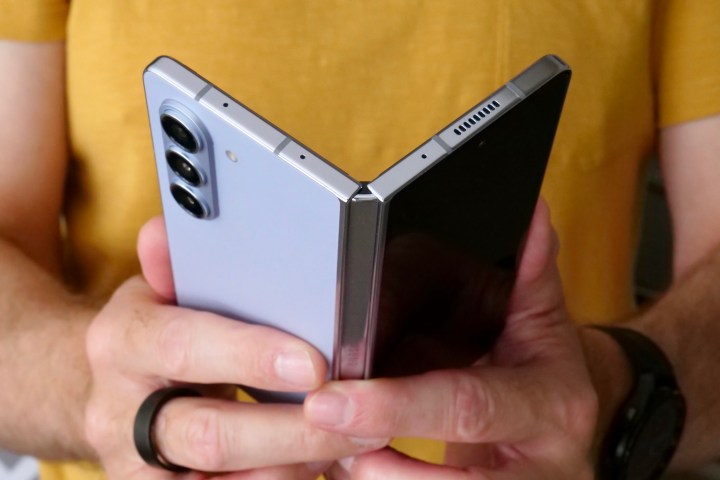
Andy Boxall / Digital Trends
Samsung Galaxy Z Fold 5
Best foldable Android phone
Pros
- Thinner and lighter than ever
- Silent, high-quality hinge
- Strong multitasking tools
- Fun, social media-friendly camera
- Inner screen is perfect for games and video
- IPX8 and durable chassis
Cons
- Battery life hasn’t dramatically improved
- Slow charging
Why you should buy this: With five years of experience, Samsung really proves that with the Galaxy Z Fold 5.
Who it’s for: Multitaskers who like the flexibility of a large, but manageable screen.
Why we picked the Samsung Galaxy Z Fold 5:
The fifth generation Galaxy Z Fold shows that Samsung knows what it’s doing in the foldable market. The Z Fold 5 has some great improvements over its predecessor, making it one of the best folding phones you can buy, as well as a great smartphone overall.
One of the big flaws of the previous Z Fold 4 was the visible gap when closed. The Z Fold 5 fixes this with the new Flex Hinge design, which means an overall better look and ergonomic feel when you use it closed. It also means less dirt and debris can get in between the inside screens.
Despite the hinge change, the size of the Galaxy Z Fold 5 is the same. You still have a 6.2-inch cover display with 2316 x 904 pixel resolution, and the inner display is 7.6-inches with 2176 x 1812 resolution. Both screens have a 120Hz dynamic refresh rate, so everything looks great. You also get Flex Mode when watching videos, and this time you get the controls on the lower half of the screen for convenience.
The cameras include a 50MP main, 12MP ultrawide, and 10MP telephoto. Like most Samsung phones, the colors will be very bright and saturated in direct sunlight. However, if you take photos that aren’t in harsh lighting conditions, they actually look more natural and realistic than other Samsung phones, which is very nice. Optical zoom is better too, but it may have some issues with focusing close in on 1x or 3x mode.
Samsung Galaxy Z Fold 5 has Snapdragon 8 Gen 2 for Galaxy for the best performance and efficiency possible. You also have 12GB RAM and your choice of 256GB, 512GB, or 1TB internal storage options. It comes with Android 13 and One UI 5.1.1 out of the box. Some improvements with the software include a better taskbar, which now shows up to four recent apps rather than two. There is also the ability to have three apps at once on the screen, along with a floating window.
The Galaxy Z Fold 5 has enough battery power to get through a day on a single charge. It also supports up to 25W fast charging, so it goes from zero to 100 in about 80 minutes. There is also support for a stylus with the new S Pen Fold Edition, which is improved from the predecessor as well with 4,096 pressure levels, IP68 water and dust resistance.
The $1,800 price will prevent plenty of people from buying, but if you have the cash to spare, it’s hard to find a better foldable experience than the Galaxy Z Fold 5.

Samsung Galaxy Z Fold 5
Best foldable Android phone
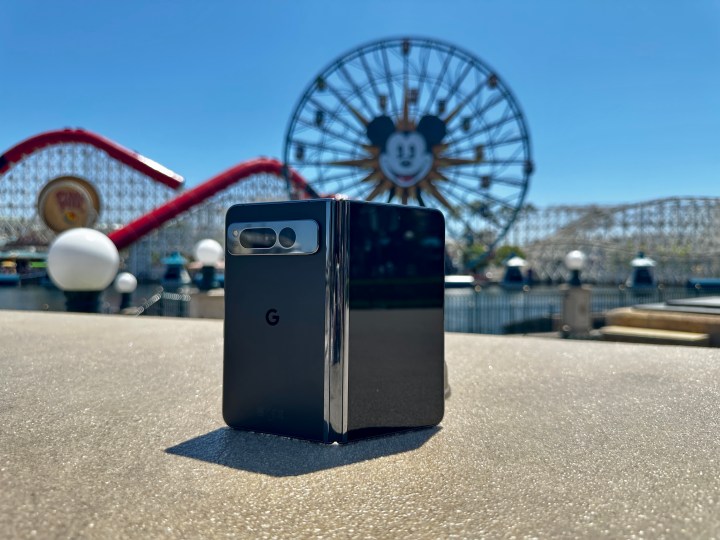
Christine Romero-Chan / Digital Trends
Google Pixel Fold
Best foldable Android phone runner-up
Pros
- Solid build quality
- Great cover display size
- Barely any gap when closed
- Beautiful displays
- Fantastic cameras
- Fast performance
Cons
- Cover display scratches easily
- One-day battery life
- Poor wireless charging options
Why you should buy this: The Google Pixel Fold is a nice, compact size and has a cover screen that feels like a normal phone. It’s powerful, fast, and takes good photos.
Who it’s for: Someone who wants a foldable but also prefers a usable cover display that isn’t too tall and narrow.
Why we picked the Google Pixel Fold:
Despite being Google’s first entry in the foldable market, the Pixel Fold is surprisingly good, showing a lot of promise. One of the biggest draws for the device is the size of the cover display, which looks and feels like a standard smartphone rather than being tall and narrow like the Galaxy Z Fold 5. There is also no real gap when it’s folded closed, which will appeal to some people.
The 5.8-inch cover display is a great size and makes the outer screen more usable than the competition. But when you unfold it, the inner display is 7.6 inches in landscape orientation, so it’s the same as the Z Fold 5, though the latter is in portrait orientation. Both the cover and inner displays are OLED and look beautiful and sharp, and the 120Hz refresh rate means scrolling and animations are fluid and smooth.
The Pixel Fold has the Tensor G2 chip inside, like the rest of the Pixel 7 series, so it’s fairly powerful and efficient. However, it does tend to run warm if you are doing a lot of resource-intensive tasks or gaming, so be aware of that. With Tensor G2, you also get great results for your photos, especially with the camera hardware. It comes with a 48MP main shooter, 10.8MP ultrawide camera, and 10.8MP telephoto camera with 5x optical zoom.
On the battery front, the Pixel Fold is a bit disappointing, as the 4,821mAh battery only lasts a little over a day with normal usage, similar to the other Pixel devices. And while there is wireless charging, it caps out at 7.5W, and there is no reverse wireless charging.

Google Pixel Fold
Best foldable Android phone runner-up
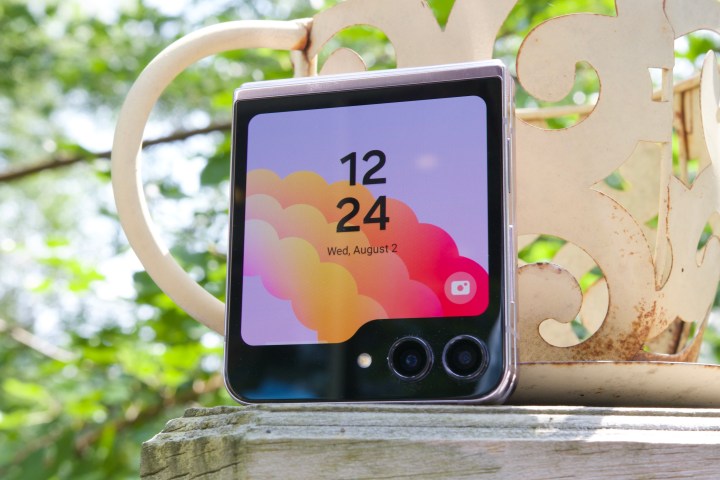
Joe Maring / Digital Trends
Samsung Galaxy Z Flip 5
Best flip phone Android phone
Pros
- No more gap when folded shut
- Extremely well-built
- Hinge feels outstanding
- Much more useful cover screen
- Fantastic performance
- Good and dependable cameras
- 5 years of updates
Cons
- The crease is still there
- Mediocre battery life
- Cover screen requires lots of tweaking
Why you should buy this: It is one of the best flip phones you can buy today.
Who it’s for: It appeals to the user who desires a compact, retro-style flip phone but with modern-day accouterments.
Why we picked the Samsung Galaxy Z Flip 5:
Want a foldable but think the Z Fold 5 isn’t compact enough? Then you should consider the Galaxy Z Flip 5 instead, which is also a huge improvement over its predecessor.
With the Z Flip 5, you get a 3.4-inch cover display, which is much better than last year’s 1.9-inch cover display. This larger window lets you see bigger clocks, widgets, and even run full apps on the cover screen. The display is shaped like a folder so it doesn’t interfere with the cameras, and while the 60Hz refresh rate could be better, it looks fine in almost every situation.
The inside display of the Galaxy Z Flip 5 is a 6.7-inch Dynamic AMOLED with 2640 x 1080 resolution and it has a 120Hz refresh rate. In other words, you get bright, vivid colors that pop, and sharp text with smooth scrolling animations. However, the crease is definitely visible.
The cameras are similar to the Flip 4, as you have a 12MP main shooter with f/1.8 aperture and OIS, plus a 12MP ultrawide camera with 123-degree field of view. But the Z Flip 5 has better color reproduction than before, and there is a clear lens coating to help prevent lens flare. The selfie camera also has a larger sensor.
Like the Z Fold 5 and S23 series, there is a Snapdragon 8 Gen 2 processor in the Z Flip 5, giving you optimal performance and efficiency. It also has 8GB RAM and either 256GB or 512GB of storage options to choose from. It comes with Android 13 and Samsung’s One UI 5.1.1 out of the box. Battery life is about one full day with a 3,700mAh battery, and you get 25W fast charging, 15W wireless, and 4.5W reverse wireless.

Samsung Galaxy Z Flip 5
Best flip phone Android phone

Joe Maring/Digital Trends
Motorola Razr Plus
Best flip phone Android phone runner-up
Pros
- Viva Magenta color looks incredible
- Water and dust resistance
- Game-changing cover screen
- Super-minimal display crease
- Excellent performance
- Lovely software experience
Cons
- Mediocre cameras
- One-day battery life
- Wired charging capped at 30W
Why you should buy this: Motorola has leveraged its past to create a truly excellent flip smartphone.
Who it’s for: Anyone who wants a great flip smartphone.
Why we picked the Motorola Razr Plus:
Folding and flip phones have left their infancy and are rapidly approaching relevance, and Motorola’s Razr Plus is a strong example of a flip smartphone done right. While it has some flaws, most notably the weak camera and only-decent battery life, the Motorola Razr Plus is one of the most fun flip phones we’ve used.
It helps that the Razr Plus gives a strong first impression. We received the Viva Magenta colorway for our review, and it’s stunning. It has a soft vegan leather backside with a glossy aluminum frame, and — astoundingly for a flip phone — it also has an IP52 rating for dust and water resistance. While it’s only rated for dust resistance and dripping water, that’s still more than any other folding or flipping phone on the market. It’s also somewhat durable and tanked two drops onto hardwood floors with no damage. Again, impressive for a phone of this type.
That said, it’s worth noting that the overall build quality of the Razr Plus isn’t quite up to par with the Galaxy Z Flip 5. Put the two phones side-by-side, and it doesn’t take long to appreciate the sturdier, more fluid hinge on the Samsung phone. The Razr Plus doesn’t feel terrible in this regard, but the Z Flip 5 is a step ahead.
So it looks good and has a decent level of durability — but what about the folding displays? The 3.9-inch cover screen is the one you may end up using the most, as it’s excellent. The resolution is high and ends up at a crisp 413 pixels-per-inch, and it sports a 144Hz refresh rate as well. You can add up to eight “panels” to this screen to allow you to jump into specific apps whenever you like, though you can run any Android app from this screen as well, so the panel system is purely for convenience. The inner screen is a 6.9-inch pOLED panel running a 1080p resolution and a 165Hz refresh rate — and it’s also great. Motorola really knocked it out of the park with this pairing.
Performance is similarly strong. The Snapdragon 8+ Gen 1 processor may not be the latest processor from Qualcomm, but it’s still extremely capable. It’ll run any modern game and won’t struggle with anything you’re likely to throw at it. It does get hot during games, though, and while the battery lasts a day, it’s only a day, and you can and should expect more from a $1,000 smartphone. Charging is capped at 30W, which again isn’t great, but acceptable.
The camera, as mentioned, is easily the weakest element of the phone. The main camera comprises a 12MP main lens and a 13MP ultrawide lens, and it’s inconsistent and generally weak. While not “bad”, per se, it’s not a camera we’re particularly happy with, and images tend to handle strong and weak lighting badly. The 32MP selfie camera doesn’t bring the experience up either, as it creates washed-out and forgettable stills.
Beyond the hinge and camera complaints, the Motorola Razr Plus delivers a very fun experience. The cover screen is a delight to use, as it’s a gorgeous phone to look at, and the software is extremely well-designed too. If you’re OK sacrificing camera and hinge quality for elements like the leather back and more robust cover screen, the Motorola Razr Plus is an excellent foldable option.
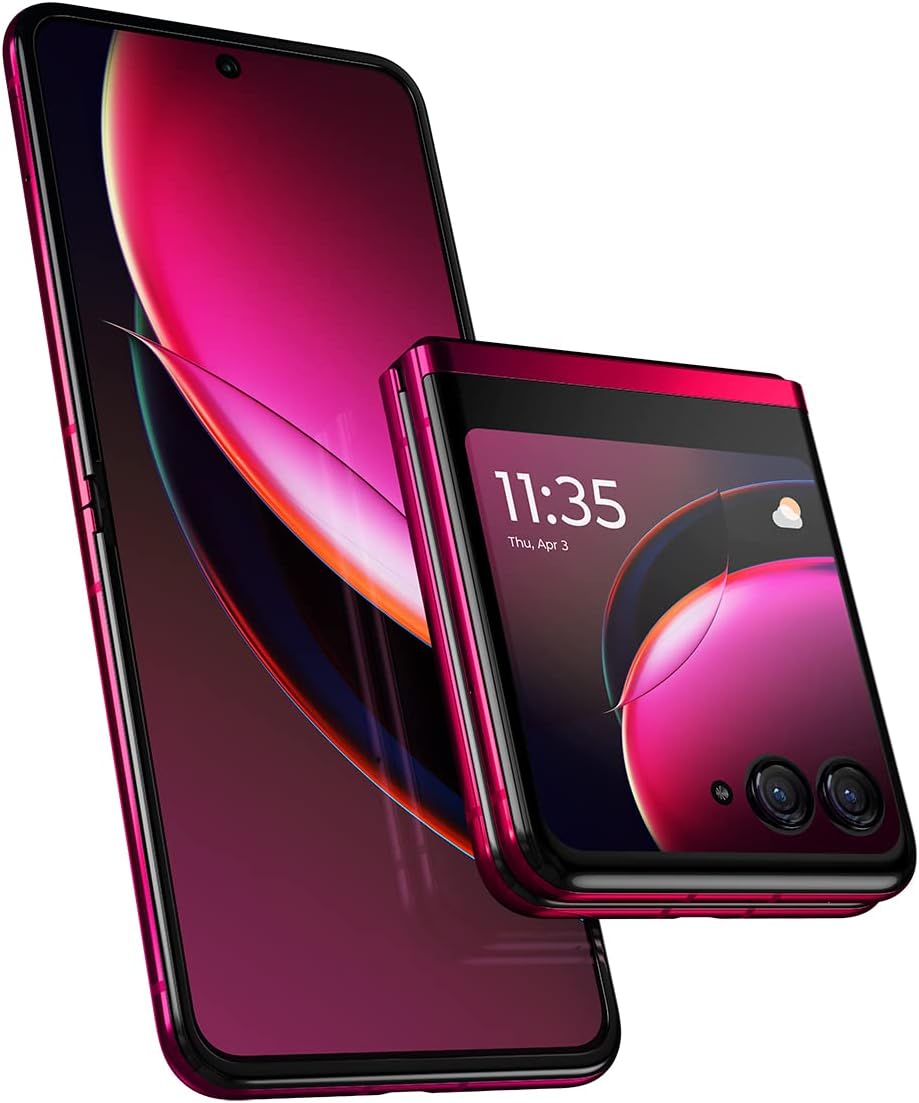
Motorola Razr Plus
Best flip phone Android phone runner-up
Frequently Asked Questions
Which brands make the best Android phones?
We’ve highlighted Samsung a lot above, and Samsung does make some of the best phones. But it depends on your price range. Samsung is the king of the higher Android price bracket, but head further down, and you start to notice the Google Pixels and other more modest budget models. The bigger names you recognize should definitely be preferred, as quality can be an issue when you start experimenting with obscure brands.
That said, you should not base a buying decision solely on a brand name, as any manufacturer can make a bad phone. Instead, check out individual phone reviews, and decide that way.
How do you choose the right Android phone for your needs?
Price, screen size, camera capabilities, durability, and processing power are some of the most important factors to consider when buying a phone. If you work or game on your phone, you’ll want a device with speedy processing. If you take a lot of pictures or videos, the camera might be a make-or-break factor for you.
How do Android phones differ from iPhones?
Android phones run on the Android operating system, while iPhones run on iOS. But this is only the beginning. Android phones typically offer USB-C charging, while Apple phones use Lightning chargers, at least for now. Users praise Apple for its clean interface, lack of bloatware, privacy, and ease of integration with other Apple devices. Users praise Android for its easy customization, integration with Windows and other devices, affordability, expansion, and innovation.
How long should an Android phone last?
Most modern smartphones should last at least three years, and ideally up to five years. Google and Samsung both promise multiple years of updates and security patches.
Which Android Phone has the best camera?
Many Android phones offer exceptional cameras, including Google’s Pixel 6a, which we named the best camera-value Android phone in this list. The Samsung Galaxy S23 Ultra and the Google Pixel 7 also have stellar camera systems, producing some of the best photos you can get out of a smartphone.
Which Android phone has the best battery life?
A good phone’s battery should last you most of the day, and all the phones on this list meet that standard. However, be aware that high-intensity games, constant music or media streaming, videoconferencing, and other activities that work the processor will cause battery drain sooner. Note too that battery size is only one component of longevity. Most smartphone batteries are optimized to work with the phone’s hardware and software for optimal performance.
Editors’ Recommendations
